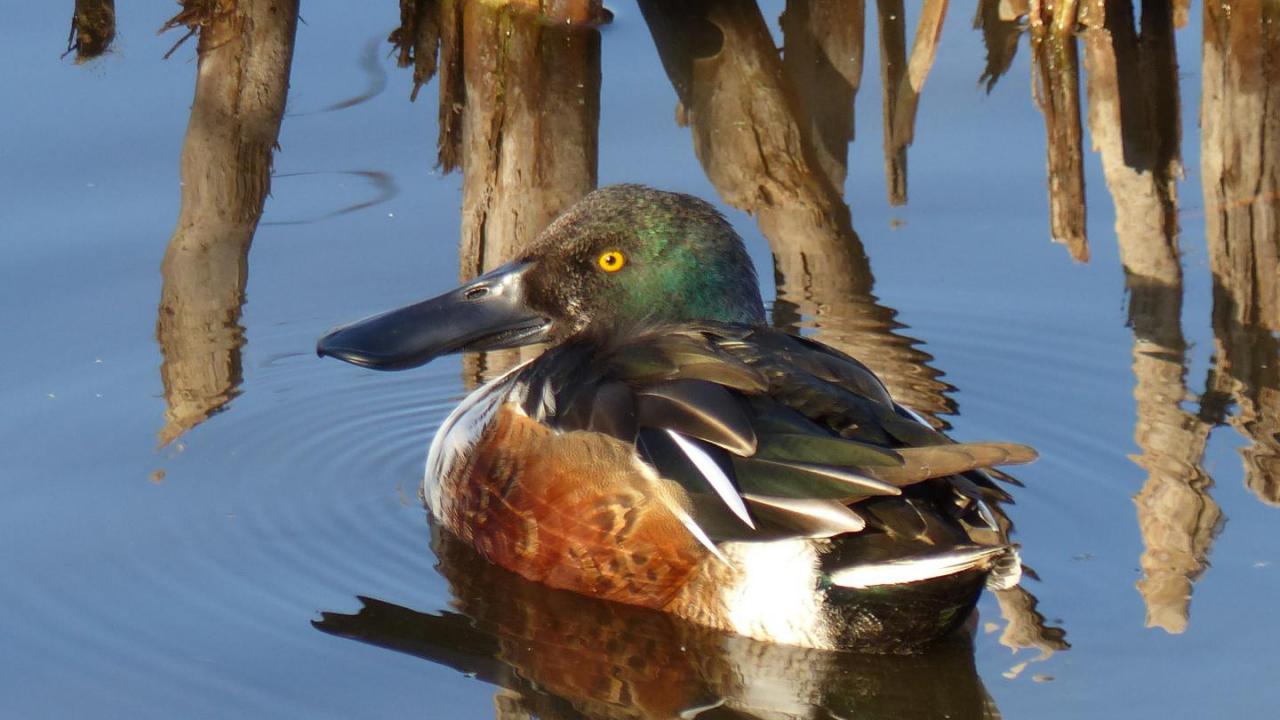Description:
At the end of the summer (August/September) and before getting their new plumage for the winter, all ducks moult their plumage.
Feathers wear out and will therefore have to be replaced at least once a year.
As a rule, this does not happen during the strenuous or difficult breeding season, migration season or winter.
That is why most birds moult in late summer, so between the breeding and migration seasons.
The new plumage is the winter plumage.
It ensures that the birds are in top condition for a long migration or to survive the winter.
Due to the simultaneous moult of the flight feathers, they cannot fly for a short time (3-4 weeks) and then a camouflaged plumage is very useful to not stand out from predators.
During this moult (eclipse plumage), the male Northern Shoveler, which is very conspicuous the rest of the year, has a non-descript brown plumage (see 3rd photo) which looks very much like the female Northern Shoveler.
In its eclipse plumage, the male can be distinguished from the female by the grey head and reddish brown flanks; the female has a brown head and brown flanks.
1st & 2nd photo: An adult male. Lagoa de São Lourenço, Algarve, Portugal, 19 November 2017
3rd photo: An adult mal. EVOA Visitor Centre area, Tagus Estuary Nature Reserve, Portugal, 7 October 2021
4th photo: a male in eclipse plumage (moulting). Lagoa de São Lourenço, Algarve, Portugal, 19 November 2017
5th photo: A female. Lagoa de São Lourenço, Algarve, Portugal, 19 November 2017





